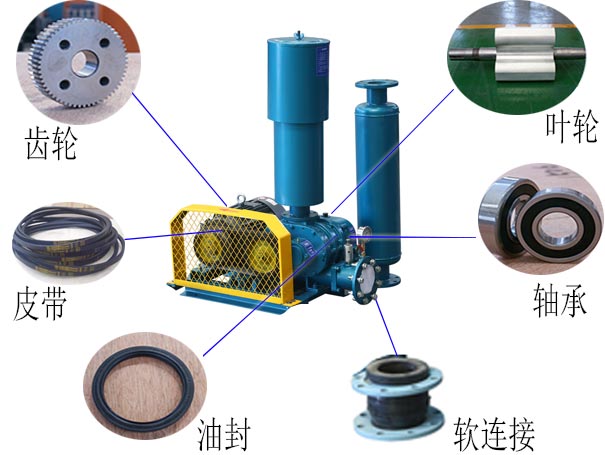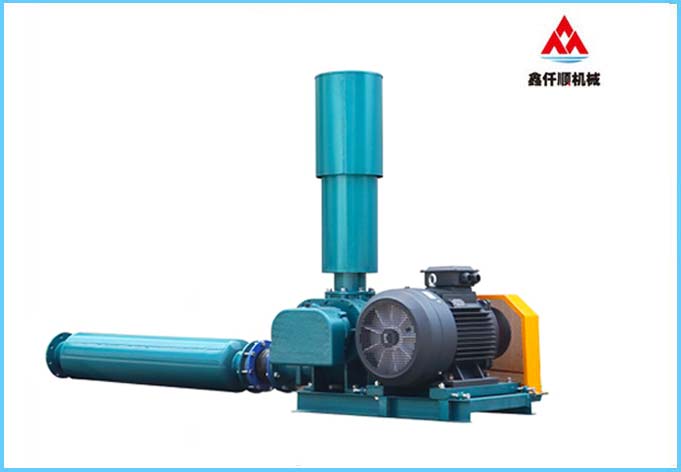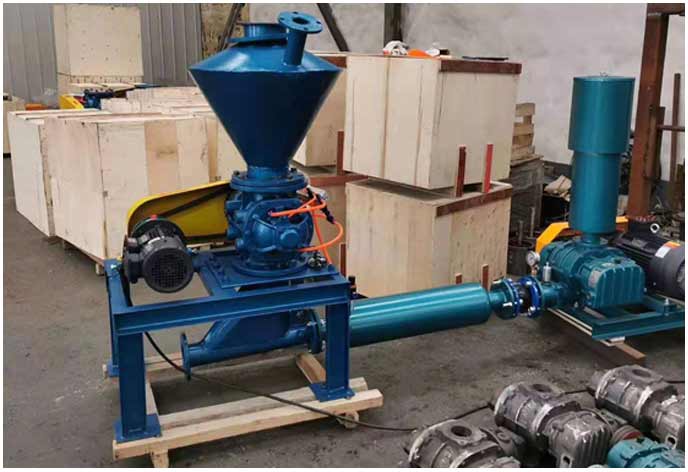Causes of overcurrent caused by three blade roots blower:
1. Inlet and outlet pipes are blocked
Trefoil Roots blower The outlet is not unobstructed, resulting in overvoltage and overload of the motor. The pressure rises instantaneously, and the ammeter rises, causing overcurrent. 2. The use of lubricating oil is not standard
The three blade roots blower is short of enough lubricating oil. When the roots blower runs short of oil, the wear of impeller and gear will increase, resulting in motor load and accelerated loss.
3. Human Factors
If the check valve is not installed as required or the valve is not opened, current overload may occur. If the check valve is installed reversely, it will also cause machine failure.
4. Poor quality fan
The three blade roots blower is a faulty blower when it leaves the factory. The gap between the parts of the blower is not up to the standard, which causes additional friction, damages some parts, causes motor overcurrent, and then fuses.
Installation of three blade roots blower:
1. The three blade roots blower is a machine with high speed operation and strong vibration. In order to ensure safety, the machine needs to be installed and fixed on the ground.
2. Because the volume of each type of three blade roots blower is different, it is necessary to dig a suitable pit in the corresponding position with the corresponding size and embed the anchor bolt to fix it. Fix the three blade roots blower inside and fill it with cement concrete.
3. After fixing the concrete, tighten the nuts. Make the fan base and concrete firmly connected together. It plays the role of fixing the three blade roots blower. Improve the operation safety of equipment. Reduce vibration and increase the service life of three blade roots blower.
Precautions for installation of three blade roots blower:
1. The fan shall not be installed in places where people often go in and out to prevent injury and scald.
2. The fan shall not be installed in the place where inflammable, explosive and corrosive gases are easily generated, so as to prevent fire disaster, poisoning and other accidents.
3. According to the direction of the air inlet and outlet and the maintenance needs, there should be adequate space around the foundation surface.
4. When installing the fan, check whether the foundation is firm, whether the surface is flat, and whether the foundation is higher than the ground.
5. When the fan is configured outdoors, a canopy shall be set.
6. The fan can be used for a long time under the ambient temperature of no more than 40 ℃. When the temperature exceeds 40 ℃, exhaust fan and other cooling measures should be installed to improve the fan
service life.
7. When transporting air, biogas, natural gas and other media, the dust content shall generally not exceed 100mg/m3.
Noise reduction principle of three blade roots blower:
According to the data obtained from the actual test on the noise source of industrial roots blower at the operation site,
We have determined the range and amount of noise reduction required, which is the main basis for designing the sound absorber and fluid channel. At the same time, we have adopted sound absorption materials with large sound absorption to enhance the absorption effect. When the noise source of the three blade roots blower is at the maximum noise level, there is often more than one spectrum value, and the requirements for noise reduction amount are different for different spectrum bands.
Both the ventilation duct silencer and the drum induced roots blower silencer are impedance acoustic flow type. The resistive structure is used to absorb and eliminate high and medium frequency noise, and the resistive structure is used to eliminate and reduce medium and low frequency noise. At the same time, the high-frequency and low-frequency sound absorption and noise elimination areas are used in the resistive channel to maximize the noise elimination band, In order to achieve good noise reduction effect.
Maintenance of three blade roots blower:
1. Do a good job in routine maintenance. The fan room should be kept clean and well ventilated, and the unit surface should be free of dust and oil dirt;
2. Regularly (monthly) check the tightness of all connecting bolts of the fan;
3. After the initial operation or overhaul, the lubricating oil in the oil tank shall be replaced after the fan has operated for 48 hours. Generally, the fan will work continuously for 500 hours to
Change the oil when starting;
4. The standby fan shall be started for at least one hour every week. Generally, the fan shall be switched with the standby fan once after 10 hours of operation to extend the use of the fan
life;
5. Under normal conditions, the fan shall be checked once every 500 hours, repaired once every 2000 hours, repaired once every 3000 hours, and repaired once every 15000 hours
Repair it once.










